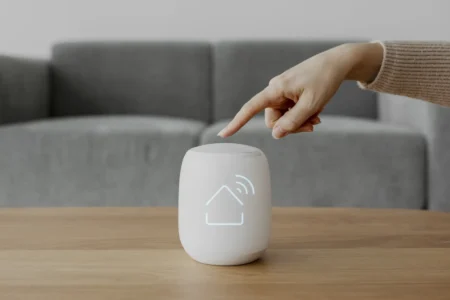 The term “smart home” gets thrown around a lot — but what does it really mean? Is it just a fancy voice assistant that turns on your lights, or something more?
The term “smart home” gets thrown around a lot — but what does it really mean? Is it just a fancy voice assistant that turns on your lights, or something more?
It’s about comfort, safety, energy efficiency, and making your everyday routines smoother.
What Is a Smart Home?
A smart home uses connected devices — usually controlled through your phone, voice, or automation — to manage everything from lighting to security to energy use.
It’s not one gadget. It’s a system where devices work together.
Examples:
- Smart thermostat adjusts temperature based on your habits
- Lights turn off when no one’s home
- Doorbell camera sends alerts to your phone
- Blinds open with sunrise
Why People Are Making the Switch
Smart homes aren’t just for tech lovers. The benefits are real:
- Convenience — Control everything from your phone or by voice
- Security — Cameras, sensors, and smart locks keep your home safer
- Energy savings — Automations prevent wasted electricity and heating
- Comfort — Set the perfect mood with one tap
- Peace of mind — Check your home from anywhere in the world
Must-Have Smart Devices for Beginners
Getting started doesn’t mean a full overhaul. Begin with 1–2 essentials:
- Smart speaker or hub (Amazon Alexa, Google Home, Apple HomePod)
- Smart lights — Control brightness, color, and schedules
- Smart thermostat — Big energy savings, especially with zoned heating
- Video doorbell — See and talk to visitors remotely
- Smart plugs — Make regular devices smart without replacing them
Things to Consider Before You Start
- Wi-Fi strength — Weak signals = glitchy smart home. Consider a mesh system.
- Compatibility — Not all devices play nicely together. Pick a system (Alexa, Google, Apple) and build around it.
- Privacy — You’re sharing data. Stick with trusted brands and keep firmware updated.
Smart Doesn’t Mean Complicated
One of the biggest myths? That smart homes are hard to use. In reality, the best setups are simpler than traditional ones.
Want your hallway lights to turn on at night? One automation can do that — no more fumbling for switches.
Final Thought
A smart home isn’t just about tech — it’s about making your home adapt to you. Start small, choose quality devices, and build over time. Whether you want to save energy, boost security, or just make life easier, a smart home helps you do it — one command at a time.
Picture Credit: Freepik



